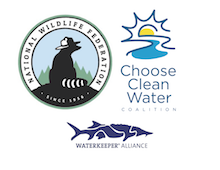Last year, a report from the United States Geological Survey showed that the source water for half of West Virginia’s 279 public water systems has dangerous levels of PFAS contamination.
In a follow-up study of the 37 most concerning systems, 27 were found to have detectable levels of PFAS in their finished drinking water—and 19 of those water systems are over the Environmental Protection Agency’s (EPA) proposed drinking water standards.
PFAS, or per- and polyfluoroalkyl substances, are a group of toxic chemicals known as “forever chemicals” because they do not break down in the environment. Furthermore, exposure to PFAS can cause severe human health effects, including thyroid disease, liver damage, weakened immune response, low birth weight, and even cancer.
Thousands of West Virginians are exposed to PFAS through contaminated drinking water every day. Thankfully, the EPA has proposed drinking water standards for six PFAS to establish legally enforceable limits in our drinking water. The six PFAS are PFOA, PFOS, PFNA, PFHxS, PFBS, and GenX chemicals.
The proposed drinking water standard for PFOA and PFOS is four parts per trillion (ppt), which is the level at which they can be reliably measured.
EPA is proposing a hazard index for mixtures of PFNA, PFHxS, PFBS, and GenX chemicals.
When finalized, water systems will be required to monitor for these chemicals. If levels exceed the proposed standards, water systems will need to notify the public and reduce the levels of these PFAS in drinking water.
For more information, see EPA’s PFAS drinking water standards website and fact sheet.
Thank you for taking action to protect West Virginians and our drinking water across the state.





